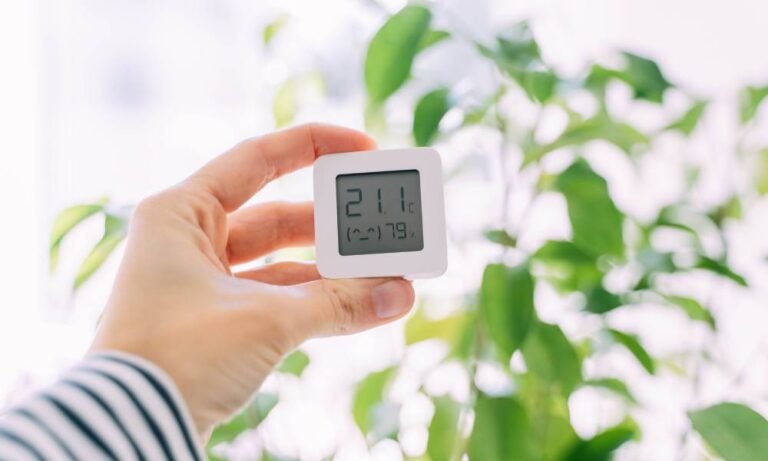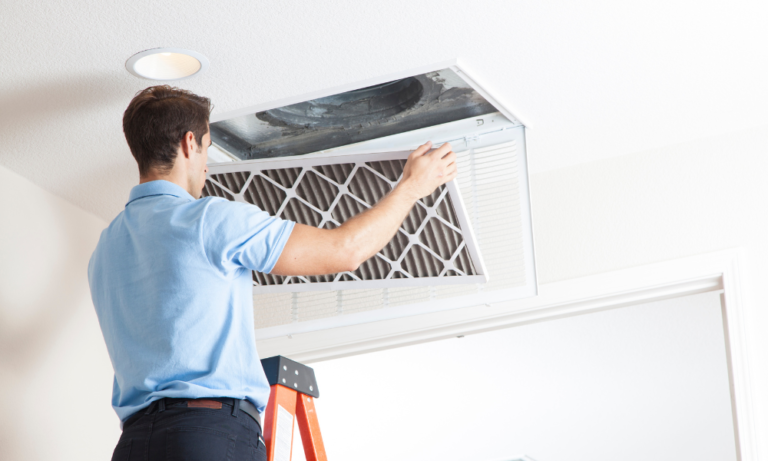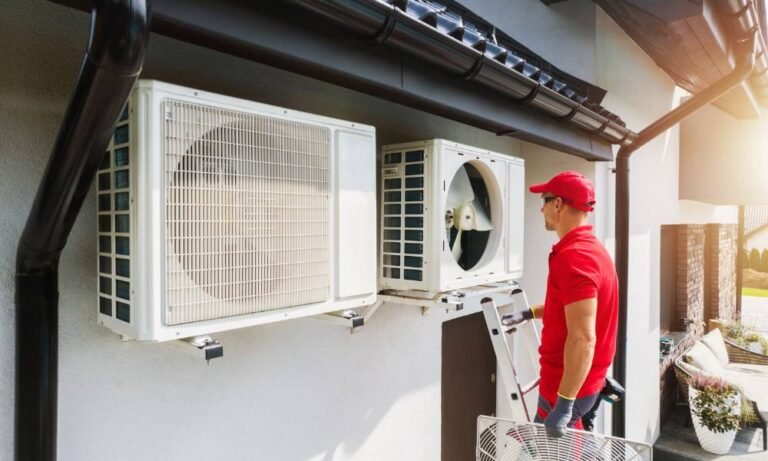Estimated reading time: 6 minutes
Choosing the right HVAC size is more than a comfort issue, it’s about efficiency, energy costs, and the long-term health of your system. Before you invest in new equipment, it’s worth understanding what “size” really means and how to know if yours is off the mark.
How To Determine Size Of Heating And Air Conditioning System?
The gold standard is a Manual J load calculation, a method developed by the Air Conditioning Contractors of America (ACCA). It’s not about guessing based on square footage alone; it’s about measuring how your home actually gains and loses heat. This calculation considers dozens of variables: local climate, insulation quality, ceiling height, window type and placement, sun exposure, and even how many people live in the home.
A technician gathers this data, often with laser measuring tools, thermal imaging, and software, and uses it to calculate exactly how much heating and cooling your home needs. The result is an HVAC system that runs efficiently, keeps temperatures even in every room, and avoids the costly mistakes of over- or under-sizing.
The real difference is how deep that calculation goes and whether it reflects your living habits. Two identical homes on paper can have very different HVAC needs if one has a kitchen that’s used daily for cooking and another rarely does, or if one homeowner prefers a steady 68°F year-round and another fluctuates with the weather.
A thorough sizing assessment also looks at lifestyle heat load (cooking, electronics, occupancy patterns), microclimate quirks (shade from a neighbor’s trees, wind exposure, or reflective glare from nearby buildings), and future changes (planned renovations or additions so you don’t outgrow your system in five years). This isn’t just math , it’s matching the system to how you actually live in your home, which is the only way to get the right HVAC size for lasting comfort.
HVAC Size Explained And Measured
In HVAC, “size” doesn’t refer to the physical dimensions of the unit, it’s about capacity: how much heating or cooling it can produce per hour. BTUs (British Thermal Units) measure this output in raw energy terms: one BTU is the amount of energy needed to raise one pound of water by one degree Fahrenheit. For cooling systems, this is how much heat the unit can remove from your home in an hour.
In air conditioning, one “ton” equals 12,000 BTUs per hour. A 3-ton AC can remove 36,000 BTUs of heat each hour. Think of BTUs as gallons per minute or calories , a way to measure output , and tons as shorthand for counting in larger portions. It’s the horsepower of comfort, not the size of the box. When an ac unit too small for house is installed, it struggles to keep up no matter the tonnage rating, it’s all about matching true HVAC size to your needs.
Undersized AC Unit Symptoms
An undersized HVAC system works like a small car pulling a heavy trailer, always straining, rarely coasting. On hot days, the AC may run constantly yet never quite hit your target temperature, leaving the air feeling less than “crisp.” Far rooms stay warmer because cooled air never reaches them effectively, and humidity remains high since the system can’t slow down enough to wring out moisture.
You might also notice your energy bills climbing, since it’s working more hours than it should. Over time, motors and compressors wear out early from the strain, often leading to costly HVAC repair if the issue isn’t addressed. If you suspect you have an ac unit too small for house, these symptoms are often the first red flags.
How Big HVAC Do I Need?
Bigger is not better. An oversized system behaves like a sports car in stop-and-go traffic, lots of starts and stops, never hitting its stride. It short cycles, blasting cold or hot air for a minute or two before shutting off, then starting again. Air doesn’t have time to circulate and even out, leaving hot and cold spots, while short run times in cooling mode mean poor humidity control and clammy air.
Frequent on/off cycles also put extra stress on components, leading to more mechanical breakdowns, and the sudden blasts of air can be noisy and uncomfortable. Both an oversized system and an undersized HVAC system can leave you uncomfortable and paying more than necessary.
How Many Btu Do I Need?
Professionals use Manual J load calculations, but you can get a rough ballpark yourself by multiplying your home’s square footage by 20-25 BTUs per square foot for cooling. For example, 2,000 sq ft × 25 BTUs = 50,000 BTUs (about 4.2 tons). This is only a starting point, since factors like insulation, ceiling height, climate, sun exposure, air leakage, and even household habits can shift the real requirement by 20-40%.
Two homes with the same square footage can still need drastically different system sizes. That’s why a proper calculation matters, the goal isn’t to hit a “textbook” number but your home’s true sweet spot for comfort and efficiency. Getting the right number from the start ensures your HVAC installation delivers consistent performance without the risk of being oversized or undersized.
Factors That Affect HVAC Size
Several key variables beyond square footage can change your required system size by thousands of BTUs. Climate plays a big role, hot, humid summers or frigid winters demand more capacity than mild conditions. Insulation quality in walls and attics keeps conditioned air inside and can make a ton’s worth of difference. Windows, especially large, single-pane, or west-facing ones, increase heat gain, while sun exposure, shading, and home orientation also matter.
Higher ceilings mean more air volume to heat or cool, and open floor plans circulate air more easily than homes with many closed-off rooms. Occupancy adds load through body heat and fresh air needs, while appliances, lighting, and room use, like a home office full of electronics, can raise cooling demands. Even duct design can influence whether a system needs upsizing or rebalancing. Misjudging any of these can result in an undersized HVAC system or one that’s simply the wrong HVAC size altogether.
Wrong HVAC Size: Problems and Fixes
Wrong sizing isn’t just uncomfortable, it costs money and shortens equipment life. If the system is too small, it runs constantly, drives up energy bills, struggles to reach the desired temperature, leaves distant rooms uncomfortable, and can fail prematurely from overwork. If it’s too large, short cycling wastes energy, causes uneven comfort, leaves the air clammy from poor humidity control, and wears out components faster.
Fixes depend on the problem. For oversized systems, zoning or variable-speed equipment can help match output to different parts of the house. For an undersized HVAC system or airflow issues, sealing and rebalancing ductwork can improve distribution without a full replacement. In some cases, the only real solution is installing the correct HVAC size for your home, which can prevent the headaches of an ac unit too small for house and pay for itself in lower bills.



